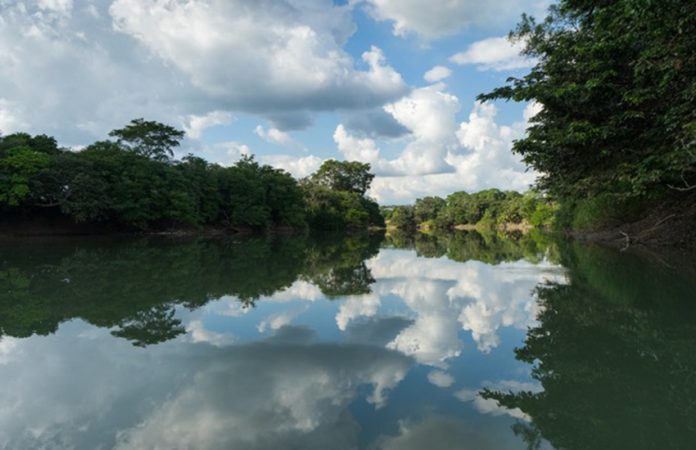“Hot. Hot. Hot. And wet. Sometimes in winter, we get a northerly wind for two days blowing straight down through the Gulf and everybody freezes, not because it’s that cold but because it’s so unusual and nobody is ready for it. Then it gets hot again.”
Villahermosa hotel worker Juana Sánchez responds rapidly when asked about her impressions of the state of Tabasco. Sánchez is from Guerrero and came to Villahermosa 10 years ago because she needed work. The oil boom in the Gulf of Mexico was making national news, so as a 23-year-old with limited prospects in Chilpancingo, she took a chance.
Sánchez’s responses confirm standard impressions of those polled — whether they’re outsiders or local tabasqueños.
Some add talk of increases in insecurity, fear of kidnappings in the state capital; others talk of the crocodiles in the city’s sewers in summer, which regularly make their way onto the city streets between June and October. Whatever the way of it, Tabasco, at first glance, is nobody’s favorite state.
Bordering the states of Campeche, Chiapas, and Veracruz, as well as the Petén department of Guatemala to the southeast, Tabasco makes up a tiny 1.3% of Mexico’s total land mass.

Extensive low-lying flood plains, mountains, and coastal areas comprise the diverse territory of the state, though, by far, the majority of it is covered by tropical rainforest as a result of plentiful perennial rainfall. Tabasco, in fact, is aptly known for this reason as El Edén de México, playing host to some of the widest variety of wildlife of any state: macaws, quetzals, jaguars, and pumas are all relatively abundant across its rainforests.
In the United States, Tabasco would be a flyover state; nobody comes here unless they have a reason to. This does, however, also have the happy side effect of ensuring that some of the state’s natural landscape and landmarks remain among the least visited in the entire country, and thus the most rewarding.
The Biosphere Reserve of the Pantanos de Centla, for instance, comprises the most extensive wetlands in North America and has been classified by the RAMSAR Convention, as one of the most important in Mesoamerica.
A site so large — comprising over 300,000 hectares — may seem a little unwieldy and difficult to access, but the small resource and visitor center at Tres Brazos where the Grijalva, Usumacinta and San Pedrito rivers meet not far south of Frontera is as good a place as any.
There, Lupe and Raúl are little-occupied local guides who have vast experience with the area’s unique regional flora and fauna.
“Bird species as diverse and plentiful as we get here,” says Raúl with pride, “you get nowhere else on Earth. Very few people come through here, but those who do are from Argentina, Canada, Italy — anywhere but here mostly. They are people who mostly haven’t come to see Mexico in general, but they have come precisely to visit these wetlands because they recognize their importance internationally.”

“For some people out there, this is a very special place.” He chuckles and emits a sardonic grin as he speaks. “But generally, nobody pays it any attention whatsoever.”
Economically, things have always been tough for Lupe and Raúl, now entering their 60s — an issue which, unsurprisingly, the pandemic has exacerbated. This region of southern Mexico, in fact, has historically been indicative of the nation’s developmental divide. Accounting for approximately 3% of the nation’s GDP, a recent emergent oil boom helped bring a portion of the state out of poverty, though only to a limited extent.
Half a million of Tabasco’s residents still live below the poverty line largely due to lack of investment and employment but also because there is little commercial movement across state lines. As a result, approximately 60% of residents of the state have no regular running water, and 10–15% of the state lacks either sewer or electricity services, or both. Tabasco also lacks the tourism of the neighboring Yucatán Peninsula, which affords states like Quintana Roo a much greater wealth.
In spite of this — or perhaps because they know what it is to live in real hardship — the people of Tabasco are among the most generous people in Mexico. A cursory meeting outside the Villahermosa capital will likely lead to an invitation into a home, then inevitably on to participation in an unwieldy family meal and lifelong friendship. Truly, salt of the earth.
What the state lacks in tourism infrastructure is more than made up for in the genuine reception any visitor who stops to talk and listen is likely to receive. It is a kind of care completely antithetical to the more professionalized tourist areas of Mexico, which charge in dollars and hours.
Of course, something of the spotlight on the state over recent years has been related to the ascendancy of Tabasco’s favorite son: Andrés Manuel López Obrador. AMLO’s nickname, El Peje, as it happens, derives from the prehistoric-looking fish with razor-sharp teeth that inhabit the waterways of the region. Both are touted proudly by tabasqueños, even those who don’t necessarily support the president’s politics.

And rightly so, because when one of the least known and certainly least admired states in the federation manages to achieve such a notable level of national recognition, who is going to look down on the scale of that achievement? Ultimately, everyone loves an underdog, and the underdog state of Tabasco has a lot more to it than meets the eye.
It may take some effort and be impossible to plan online, but anyone passing through who is happy and engaged enough to spend time on the ground with the real people of the area is sure to emerge rewarded and refreshed by the relationships they have made.
Shannon Collins is an environment correspondent at Ninth Wave Global, an environmental organization and think tank. She writes from Campeche.
